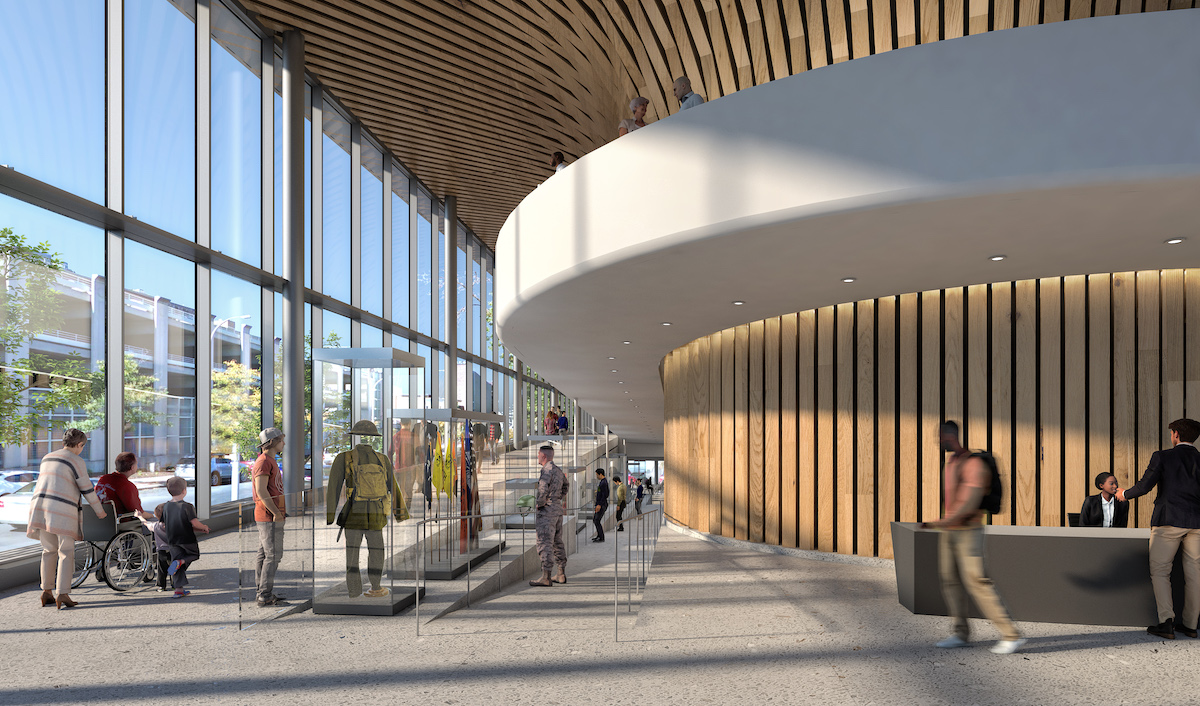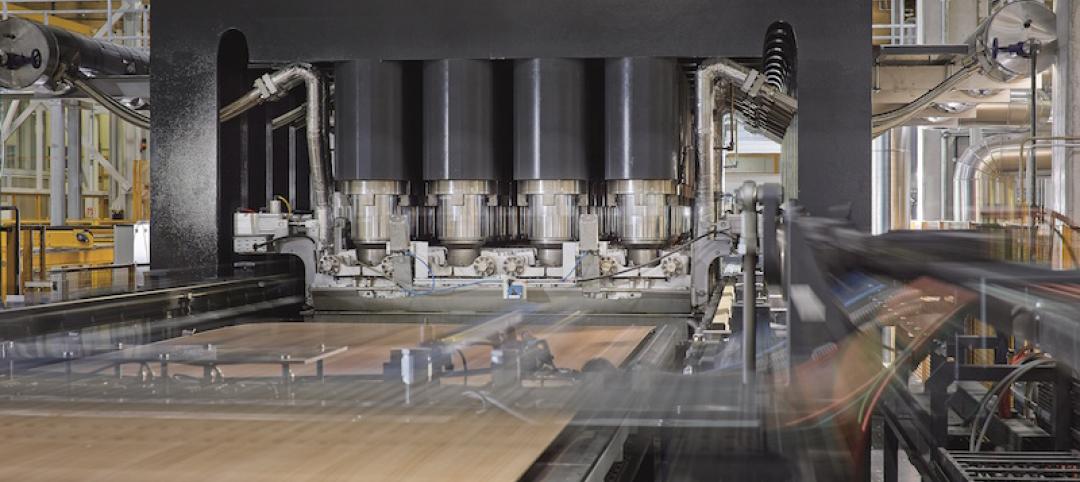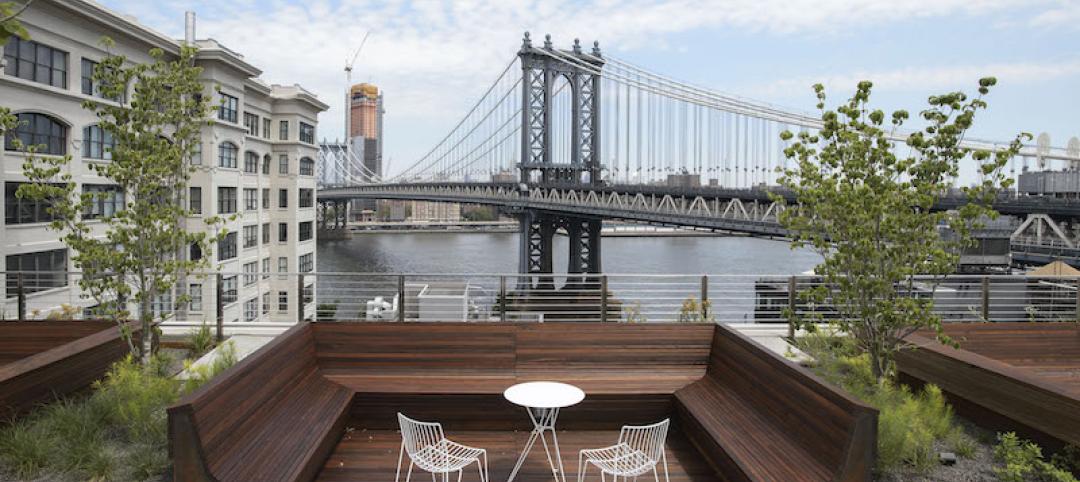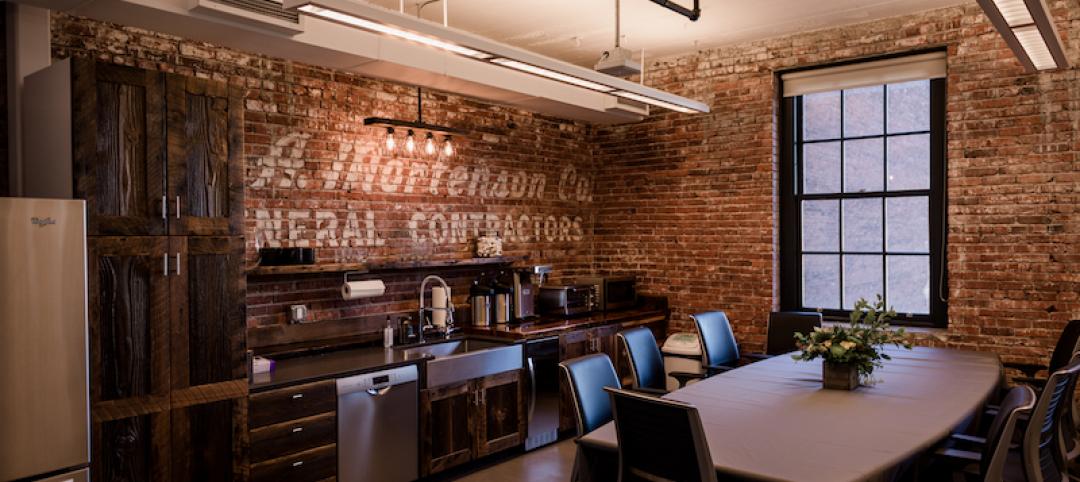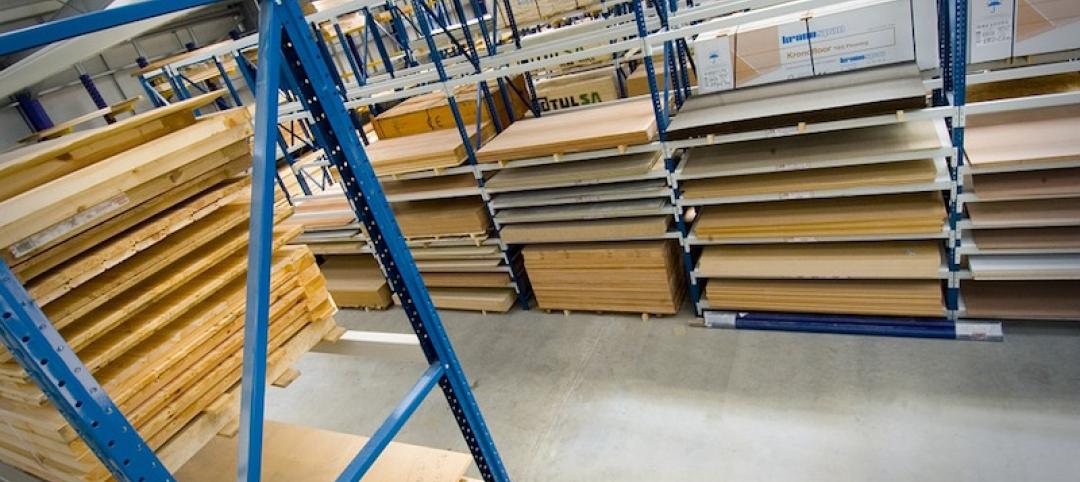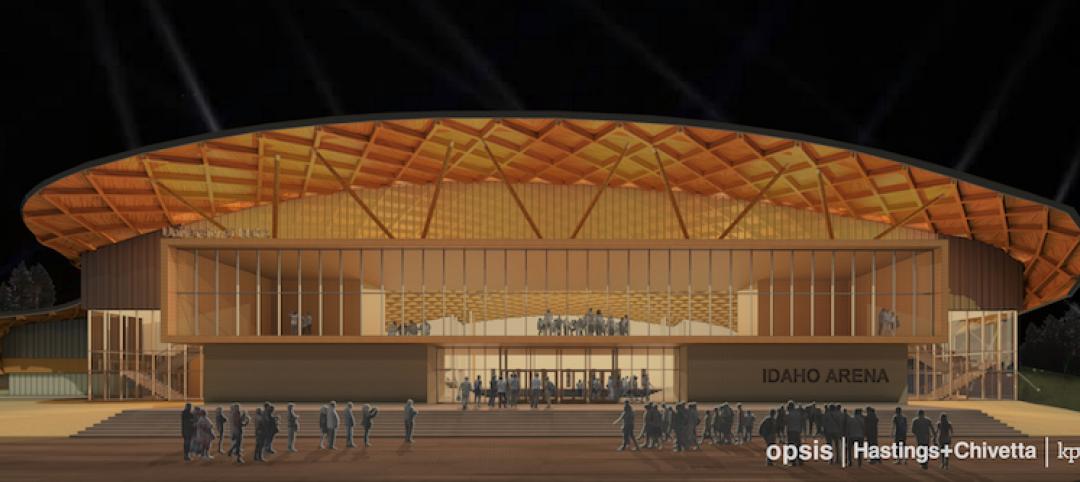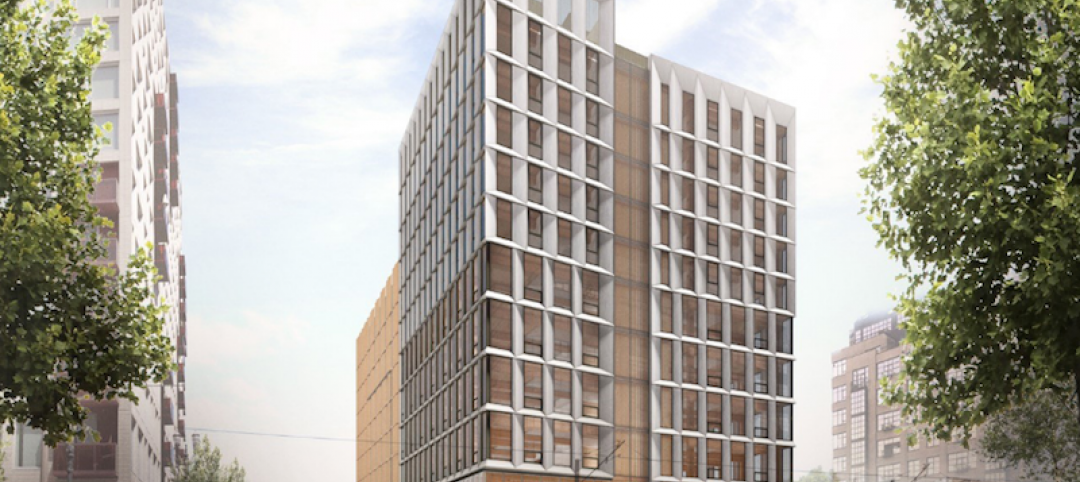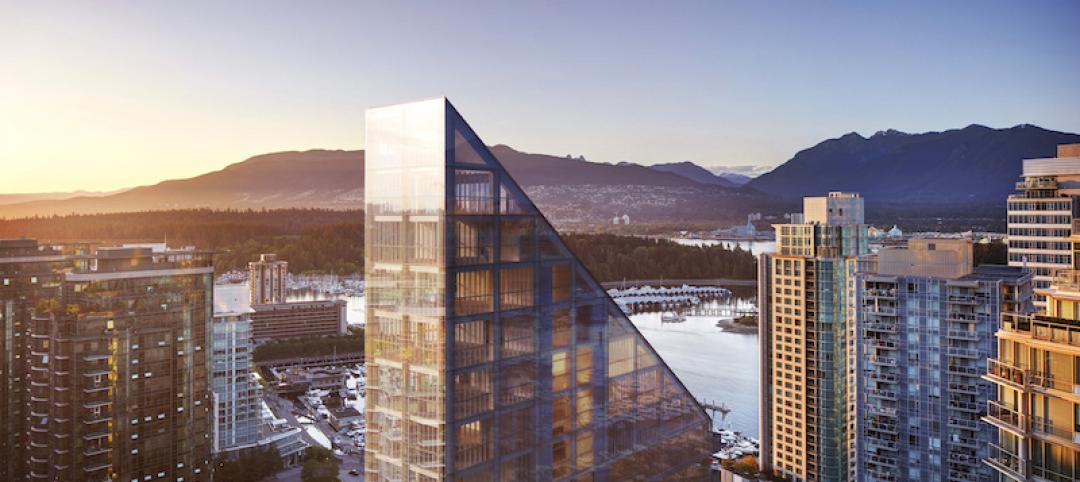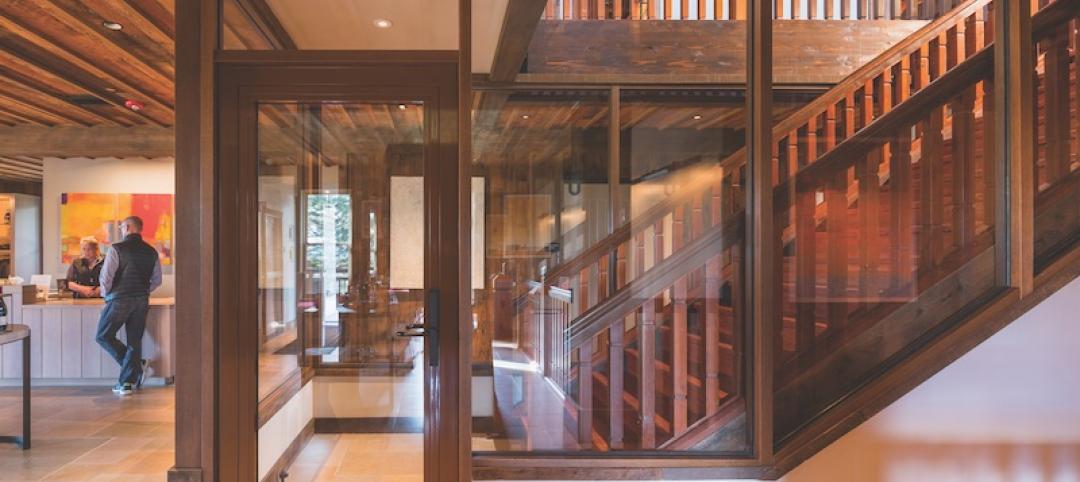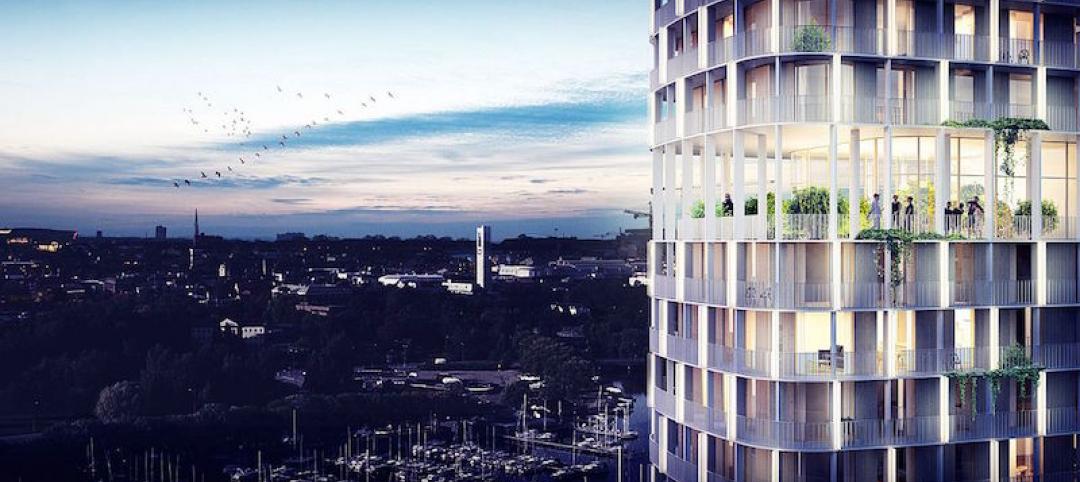Although a year away from its completion in 2020, the new National Veterans Resource Center (NVRC) is already making an impact. Located on the Syracuse University campus in New York State, the NVRC will facilitate the efforts of several on-campus veteran related organizations by combining them in the same facility for the first time. Syracuse University’s roots with the US military and veterans date to the first World War with the oldest continuously operating ROTC unit and include supporting returning WWII veterans as part of the GI Bill.
The new NVRC building, designed by SHoP Architects, features mixed materials; “If you look at the basic materials and glass, for example, there's an interesting dichotomy,” said Adamo Garritano, Senior Associate at SHoP Architects. “The upper level is quite opaque; it has this sort of camouflage look. There are a lot of references to military iconography, so it's distinguished as a more private space. The more transparent base is quite opposite. [It] connects to the campus [in that] it's quite formless. The idea is that there is a physical connection to the greater campus and this building through the transparency of the glass.”
He continued, “Then there's the iconography of the custom wood wall system that we have there [connecting the two sections]. The form really implies this idea of it spreading out and supporting this upper volume, but it's also a warm material that's intended to draw people in.”
SHoP's team chose to use thin-ply cross laminated timber (CLT), a new engineered wood product using built-up lamellae of solid wood, to build the cladding of the center portion of the NVRC which surrounds the 750 seat auditorium, to be usedby regular occupants of the NVRC andand more broadly by other Syracuse University faculty. Despite the abundance of wood-appearing products on the market today, SHoP is committed to the use of natural materials, in particular wood. The reasons can be summed up by three benefits gained from natural wood: the psychological benefits associated with biophilic design, the aesthetic and natural beauty of wood, and the environmental impact.
Biophilic Benefits
While the positive psychological impact of biophilic products—design that is made of or resembling natural material—have been widely studied, working with veterans meant taking the realities of post-traumatic stress disorder (PTSD) into consideration.
“I think the biggest factor [of using natural wood] is the biophilic warmth and natural reactions humans have to wood in general,” said Garritano.
For decades scientists and architects alike have been interested in the impact of nature in the built environment. Studies show that biophilic elements, including wood, stone, and plants, have a positive effect on people's emotional and physical well-being, as well their ability to focus and be productive.
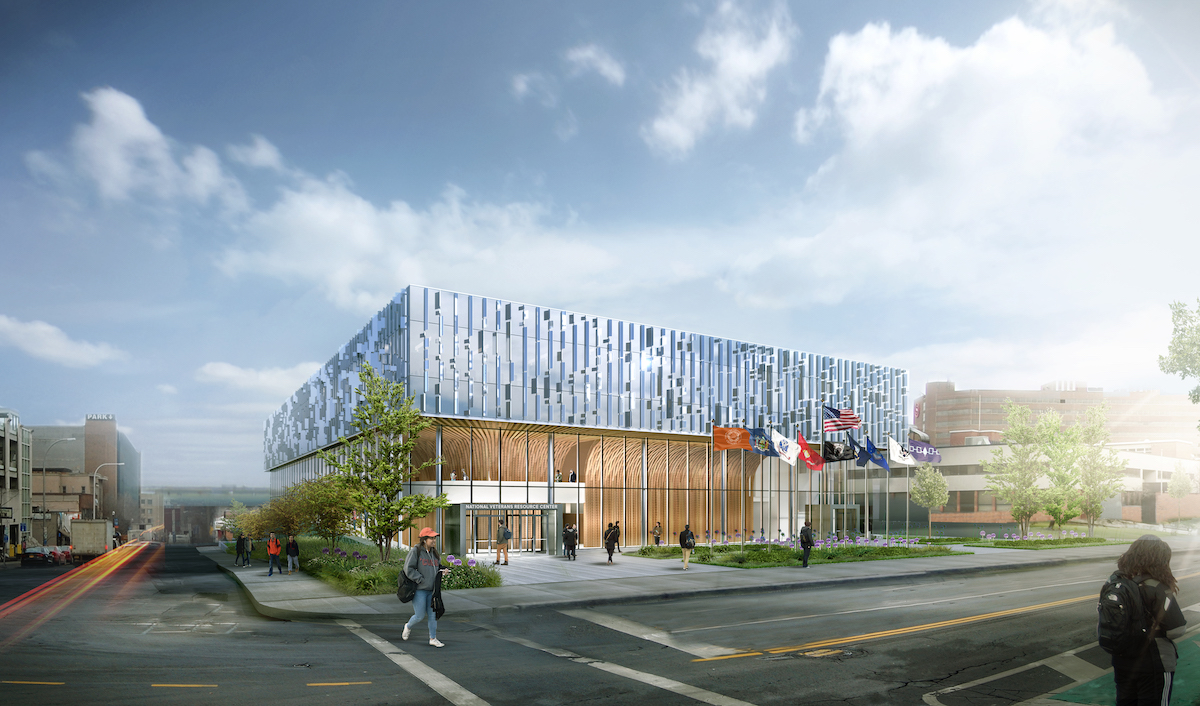 National Veterans Resource Center. Rendering courtesy SHoP
National Veterans Resource Center. Rendering courtesy SHoP
In creating a space specifically aimed at veterans and those enlisted in the military, designing with physical and mental wellness in mind is of the utmost importance. With between 11- and 20-percent of veterans returning from Operations Iraqi Freedom and Enduring Freedom being diagnosed with PTSD each year, using natural wood is more than an aesthetic option; it can provide real impact for users.
The use of wood gives one the feeling of being enveloped by the richness of nature, even within the building which also uses glass and steel. “There's this sort of complimentary composition, and the wood is the most prominent feature. [The second-floor auditorium] is a light, open, airy space. It's this idea of a sort of embracing warm, calm space, and the wood is doing most of that work.”
Aesthetic and Natural Beauty of Wood
“I think there's an authenticity [in using natural wood]. That's a theme that runs throughout the [SHoP] office beyond the use of wood. It's also how we treat a lot of our metal finishes as well. When possible, we try to stay away from painted or coated applications and speak to the natural weathering and qualities of different [materials].”
In contrast to the NVRC is one of SHoP's earliest installations: the MoMA PS1 Pavilion constructed in 2000. Entitled Dunescape, SHoP created an immersive environment built of natural wood beams. Being constrained by time and budget, the form of Dunescape appears almost primitive compared to the Syracuse NVRC building, but the use of natural wood as the primary material in creating a metaphorical connection between reality and imagination is very similar to the NVRC's auditorium growing from the university base to support the military operations and veterans utilizing the top floor.
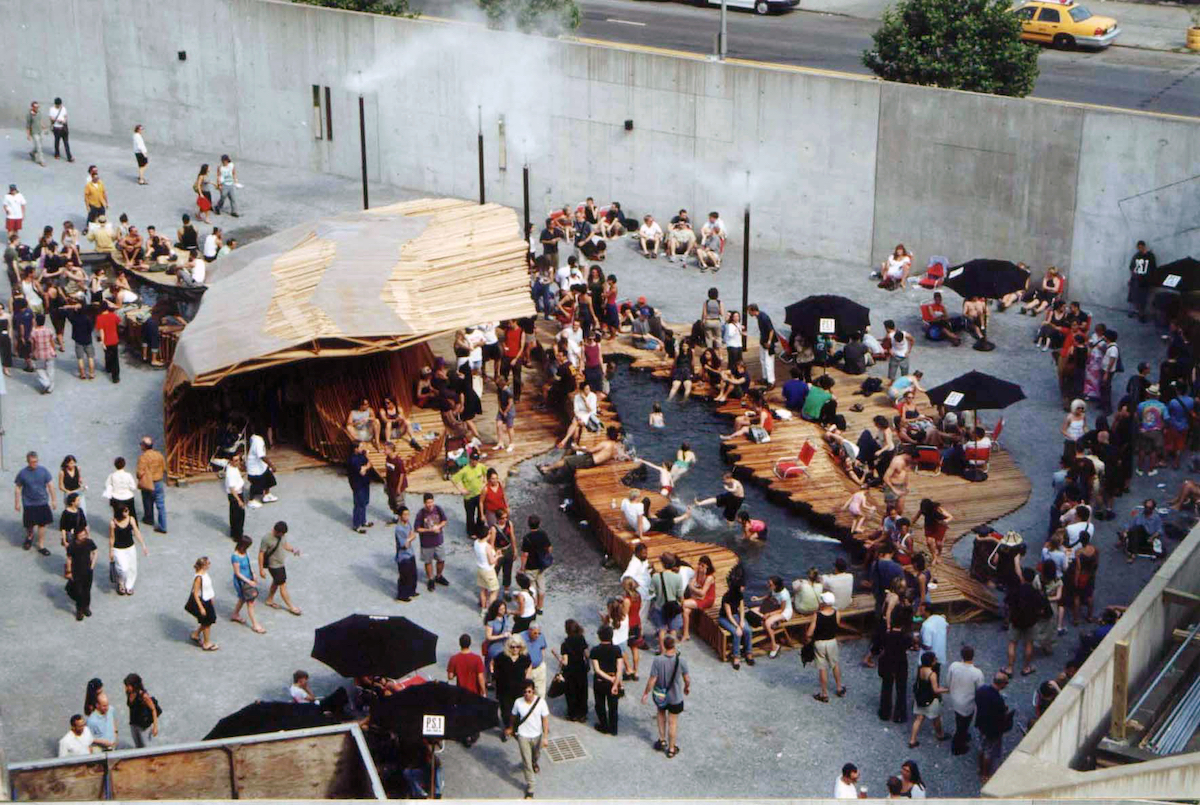 MoMA PS1 Pavilion, entitled Dunescape. Photo courtesy SHoP
MoMA PS1 Pavilion, entitled Dunescape. Photo courtesy SHoP
“If you compare the NVRC and [Dunescape], they're seemingly very different in scale, complexity and sophistication. But there is a lot of the same DNA in those projects in terms of aesthetics. There's natural connections [between the two]. Our office is really interested in the combination of process and execution as being part of the design process.”
Environmental Impact
Lastly, the impact of the design industry on sustainability and policy is an important highlight in the use of wood for Garritano. “I think there's a misunderstanding that is becoming more and more clear: using wood doesn't mean the depletion of resources necessarily.” In using wood that is sustainably harvested and managed, architects have the ability to “add value to it as a material, which ultimately influences better policy for replanting and regrowth.”
When a material is used more widely by the building and architecture industry, there is a greater possibility that manufacturers will take note to meet the needs of designers. Using sustainable wood can, in turn, increase the number of trees planted and harvested in a sustainable manner.
As Garritano continued, the growth of trees for sustainably harvested wood has a wider impact as they sequester carbon from the environment. The use of sustainably harvested wood “is probably the most impactful as a building structure, but for finishes and other materials, it certainly makes a difference as well.”
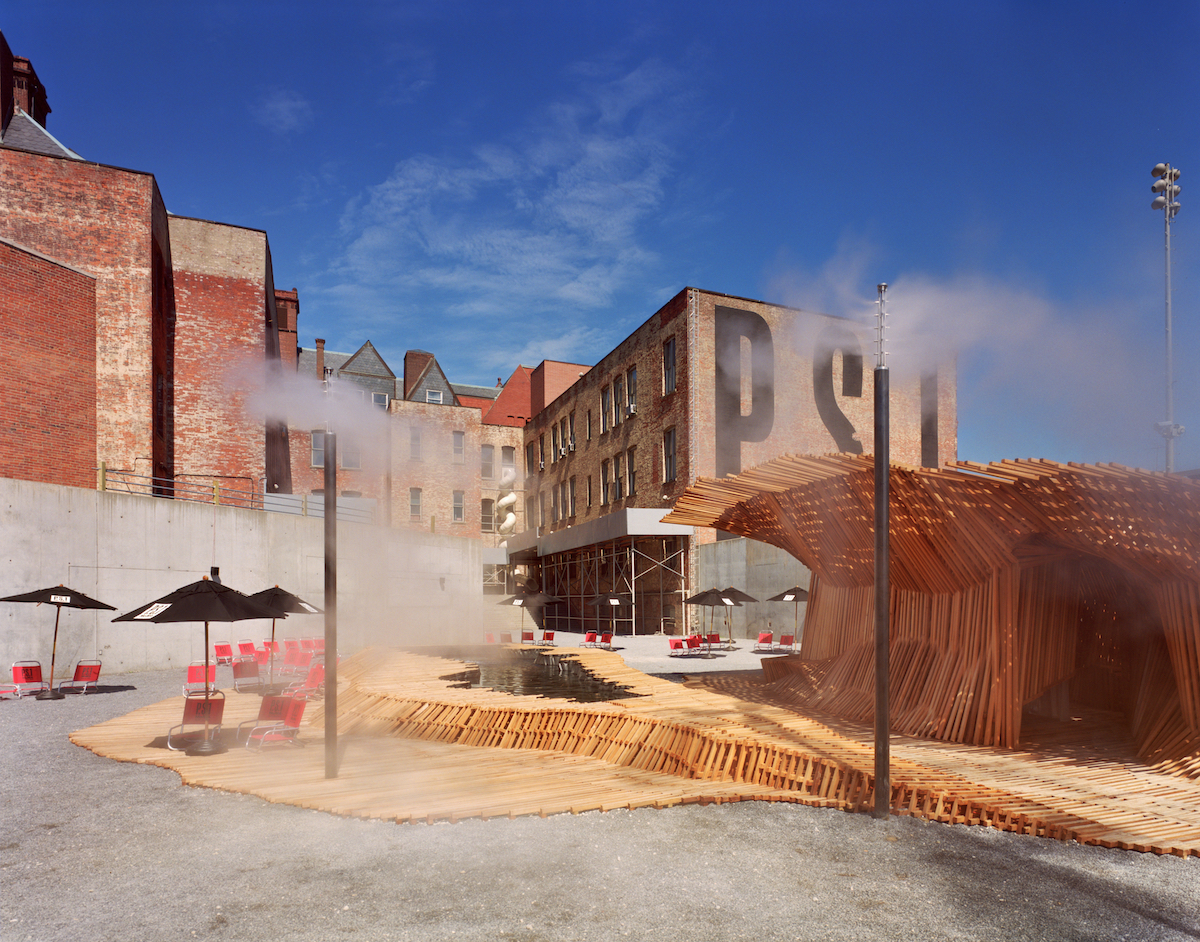 MoMA PS1 Pavilion, entitled Dunescape. Photo courtesy SHoP
MoMA PS1 Pavilion, entitled Dunescape. Photo courtesy SHoP
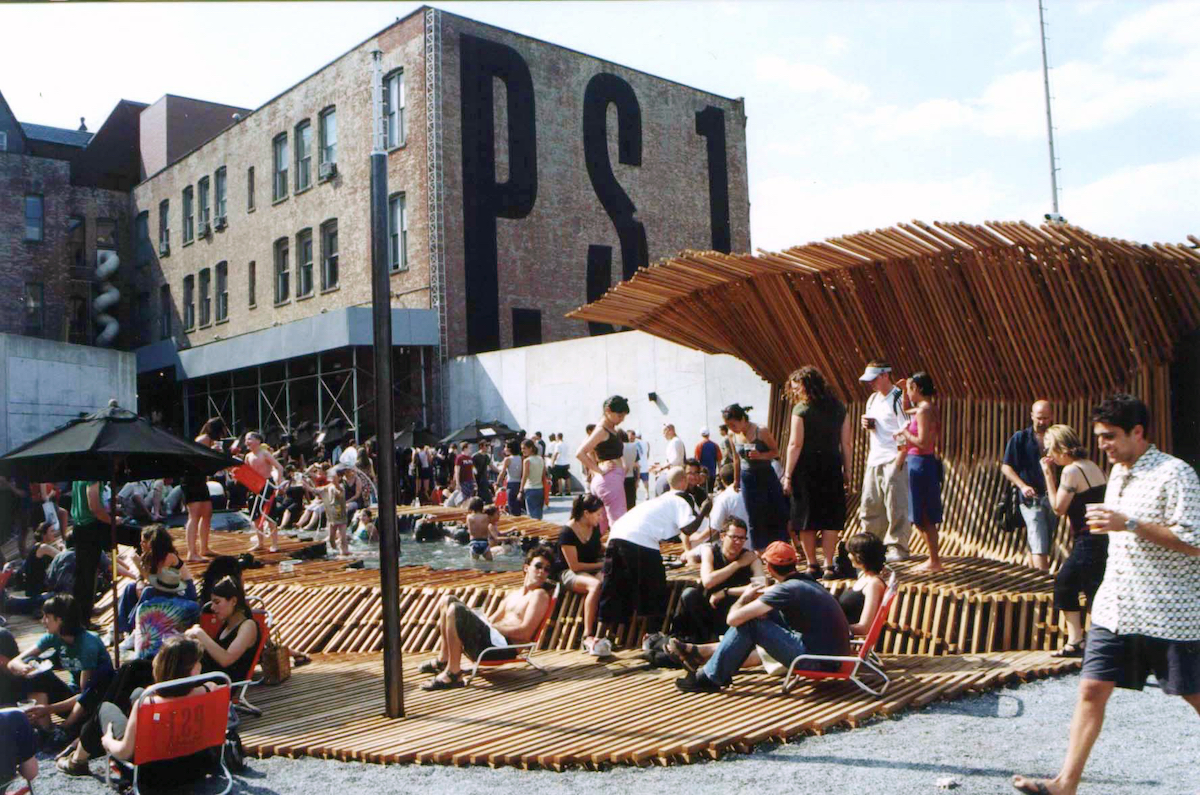 MoMA PS1 Pavilion, entitled Dunescape. Photo courtesy SHoP
MoMA PS1 Pavilion, entitled Dunescape. Photo courtesy SHoP
Related Stories
Industrial Facilities | Jul 26, 2017
EGGER will invest $700 million to build its first U.S. manufacturing facility
The company says the new facility will create 770 jobs over the next 15 years.
Office Buildings | Jul 19, 2017
James Corner Field Operations, designers of the High Line, creates rooftop amenity spaces for three Dumbo office buildings
The new spaces range from about 8,500 to 11,000 sf and were added to Two Trees Management’s anchor office buildings.
Reconstruction & Renovation | Jul 18, 2017
Mortenson Construction incorporates 100-year-old barn into new Portland office space
Mortenson deconstructed the barn and repurposed it for the new space.
Codes and Standards | Jul 10, 2017
New mass plywood panel project moves ahead with federal grant
New material is substitute for concrete and steel in multi-story projects.
Wood | Jul 10, 2017
University of Idaho Arena plans to make timber a focal point
The project received a Wood Innovation Grant that will help spur construction of the Hastings + Chivetta-designed project.
Wood | Jun 13, 2017
The first timber high-rise in the U.S. set for construction in Portland
The building’s design, building materials, and commercial tenants are all focused on the key aspect of sustainability.
| Jun 13, 2017
Accelerate Live! talk: Next-gen materials for the built environment, Blaine Brownell, Transmaterial
Architect and materials guru Blaine Brownell reveals emerging trends and applications that are transforming the technological capacity, environmental performance, and design potential of architecture.
Wood | Jun 6, 2017
Shigeru Ban-designed residential structure poised to become world’s tallest hybrid timber building
The wood, concrete, and glass building will rise approximately 233 feet when finished.
| Jun 5, 2017
Fire-rated frames deliver the natural look of wood
The TimberLine Series pairs a high-strength steel subframe with a wood-veneered metal cover cap to produce a slender fire-rated frame.
Multifamily Housing | May 17, 2017
Swedish Tower’s 15th floor is reserved for a panoramic garden
C.F. Møller’s design was selected as the winner of a competition organized by Riksbyggen in Västerås.


